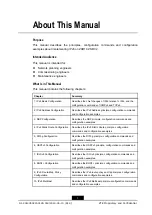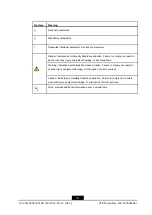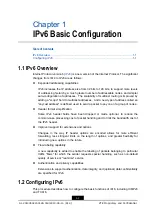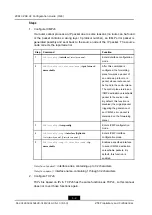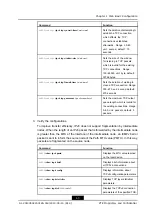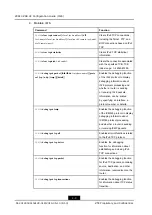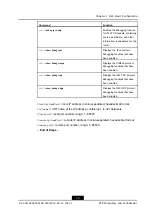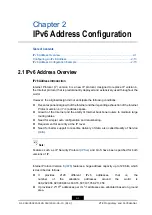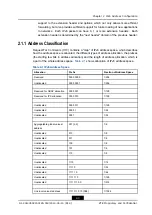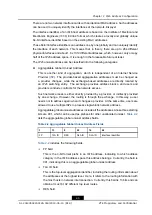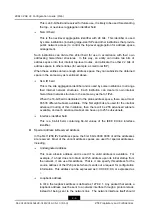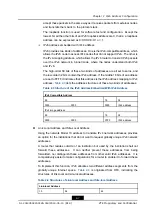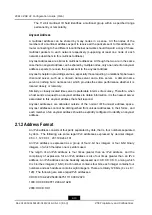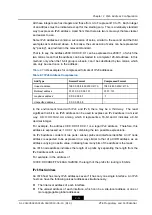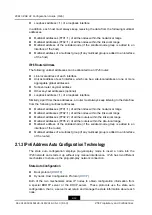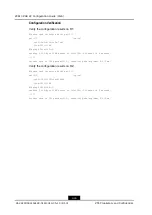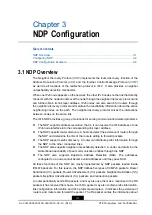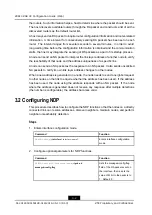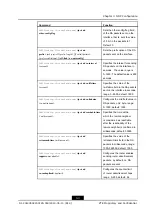
ZXR10 ZSR V2 Configuration Guide (IPv6)
Allocation
Prefix
Fraction of Address Space
Site local unicast address
1111 1110 11 [FEC]
1/1024
Multicast address
1111 1111 [FF]
1/256
Note:
The hex number in [] in this table refers to the starting and ending hex numbers of the
corresponding address.
Broadcast address in IPv6 is not valid any more. RFC defines three types of IPv6 address:
l
Unicast
It is the identifier of a single interface. The packets sent to a unicast address are
transmitted to the interface with this address identifier.
l
Multicast
It is the identifier of a group of interfaces. These interfaces belong to different nodes.
The packets sent to a multicast address are transmitted to all the interfaces with this
address identifier.
l
Anycast
It is the identifier of a group of interfaces. These interfaces belong to different nodes.
The packets sent to an anycast address are transmitted to an interface with this
address identifier (selecting the nearest one by calculating the distance based on
routing protocol).
An IPv6 unicast address can be regarded as an entity with two fields. One field is used
to identify networks and the other is used to identify interfaces of nodes on this network.
In the subsequent description of the specific unicast address types, the user finds that
the network identifier can be divided into several parts, each of which identifies different
network parts.
Unicast Address
Functions of an IPv6 unicast address are subject to Classless Inter-Domain Routing
(
), which is the same as that of an IPv4 address. That is, an address is divided into
two parts upon a specific boundary. The high bit part of an address includes a prefix for
routing and the low bit part includes identifiers of network interfaces.
In the IPv6 addressing system structure, any IPv6 unicast address requires an interface
identifier. An interface identifier is very similar to the 48-bit Media Access Control (
)
address. The MAC addresses are encoded through hardware in a network interface card.
They are burned by the manufacturer into a network interface card and are globally unique.
2-4
SJ-20140504150128-018|2014-05-10 (R1.0)
ZTE Proprietary and Confidential


